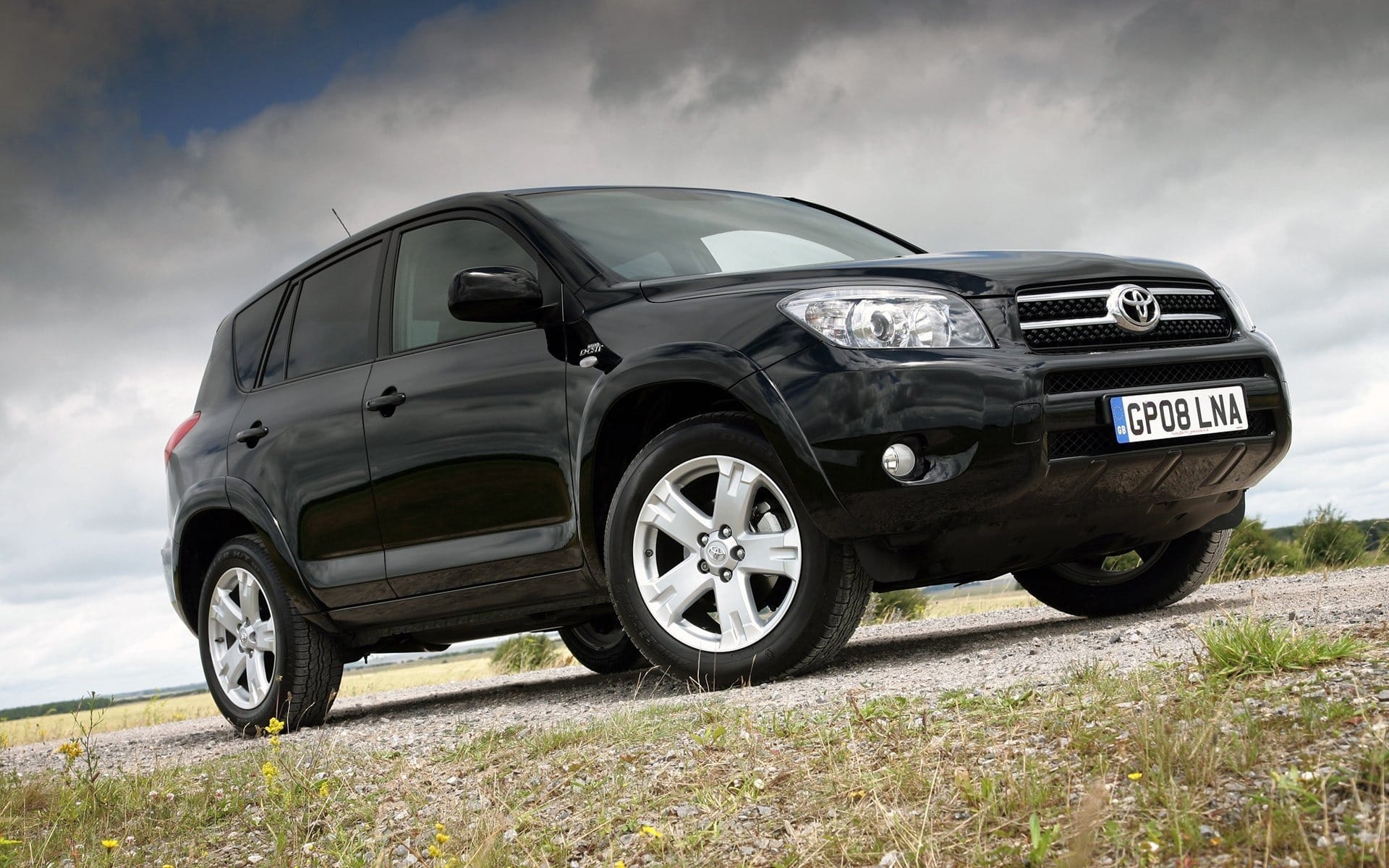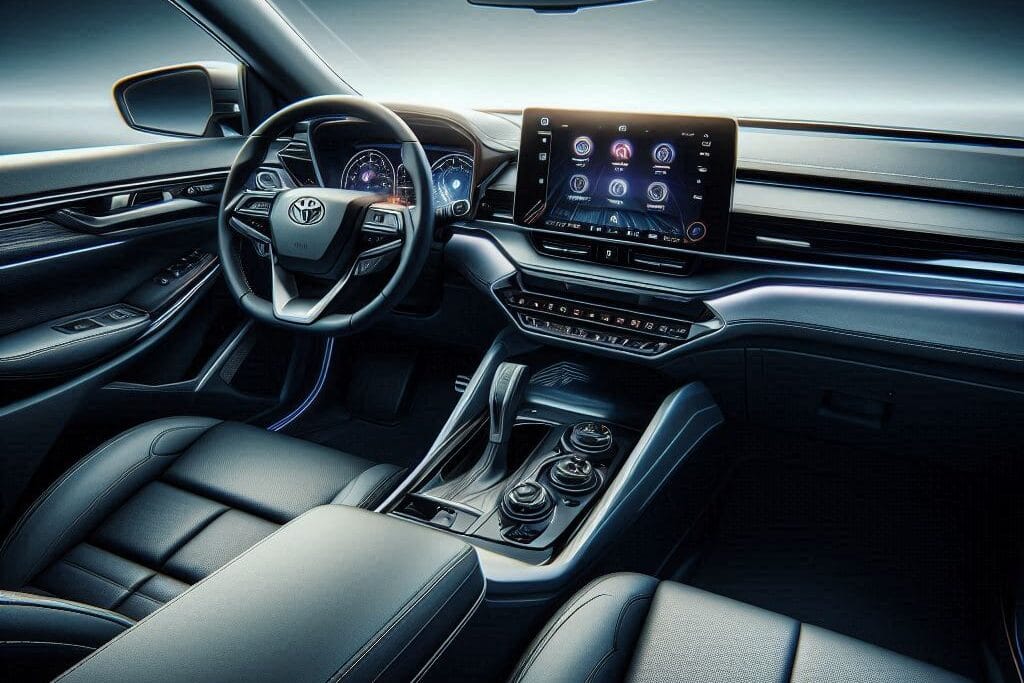Table of Contents
2025 Toyota Rav4 Vs 2025 Honda CR-V Feature
The 2025 Toyota RAV4 and 2025 Honda CR-V are two standout compact SUVs, each offering unique strengths. Here’s a quick comparison to help you understand their highlights:

| Feature | 2025 Toyota RAV4 | 2025 Honda CR-V |
| Engine | 2.5L inline 4-cylinder | 1.5L turbocharged inline 4-cylinder |
| Horsepower | 203 hp | 190 hp |
| Fuel Economy (Combined) | ~30 mpg | ~30 mpg |
| Cargo Space | 37.6 – 69.8 cu.ft. | 39.3 – 76.5 cu.ft.. |
| Seating Capacity | 5 | 5 |
| Technology | Wireless Apple CarPlay® and Android Auto™, Toyota Safety Sense™ 2.5 | Wireless Apple CarPlay® and Android Auto™, Honda Sensing® |
| Starting MSRP | ~$29,250 | ~$30,100 |
| Design | Rugged and chiseled exterior | Sleek and modern design |
| Target Audience | Adventure seekers and off-road enthusiasts | Families and urban drivers |
| Warranty | 3 years/36,000 miles (basic), 5 years/60,000 miles (powertrain) | 3 years/36,000 miles (basic), 5 years/60,000 miles (powertrain) |
Which SUV better fits your lifestyle: the rugged Toyota RAV4 or the refined Honda CR-V?
1. Toyota RAV4: Rugged and Adventurous :
- With tougher trims like the TRD Off-Road and greater ground clearance, it is made for off-road and adventure enthusiasts.
- Excellent for drivers who regularly traverse rough terrain or trails.
- provides a range of hybrid options for adventurers who care about the environment.
- appeals to outdoor enthusiasts with its aggressive and bold exterior design.
- Ideal for people looking for usefulness and durability in a variety of settings.
2. Honda CRV: Refined and Practical :
- centered on upscale comfort with roomy cabins and a seamless driving experience.
- Ideal for urban drivers or families who appreciate style and functionality.
- includes contemporary safety features like Honda Sensing® and cutting-edge technology.
- provides adjustable seating for everyday convenience and a remarkable cargo capacity.
- Perfect for people who value overall sophistication and a chic design.
How important is off-road capability, and does the RAV4’s design edge out the CR-V in that regard?
Off-road capability is a critical factor if you often find yourself exploring rugged terrains, camping in remote locations, or tackling adverse weather conditions. The Toyota RAV4 does have an edge over the Honda CR-V in this area, largely thanks to its design and specific features:

1. Importance of Off-Road Capability :
- For those who regularly travel over rough terrain, camp, or drive in inclement weather, off-road capability is essential.
- In these conditions, features like all-wheel drive, ground clearance, and specific off-road upgrades boost safety and confidence.
- Although light off-road readiness can still be advantageous, off-road capability may not be as important for casual drivers or urban commuters.
2. RAV4’s Edge in Off-Road Design :
- Higher Ground Clearance: Because it has more ground clearance than the CR-V, the RAV4 is more appropriate for off-road routes and uneven terrain.
- Off-Road Trims: All-terrain tires, dynamic torque vectoring, and improved suspension are features found on Toyota’s off-road-focused trims, such as the TRD Off-Road and Adventure models.
- Rugged Styling: Its adventurous spirit is reflected in the bold, aggressive design, which appeals to outdoor enthusiasts who appreciate a sturdy appearance.
- Off-Road Features: On difficult terrain, the RAV4’s multi-terrain select modes and advanced AWD systems offer more traction and stability.
3. CR-V’s Off-Road Capability :
- The Honda CR-V is more geared toward on-road comfort and urban usefulness, even though it has AWD options that can manage mild off-road conditions.
- Compared to the RAV4, it is less appropriate for rough terrain due to its lower ground clearance and lack of off-road-specific trims.
Which interior features do you prefer—Toyota RAV4 practical layout or Honda’s sleek and spacious design?
Here’s a comparison of the interior features of the Toyota RAV4 and the Honda CR-V to help you decide which layout might suit your preferences:
1. Toyota RAV4: Practical Layout :
- User-Friendly Design: emphasizes usability with its simple functionality and logically placed controls.
- Compact Yet Versatile: provides a useful design with ingenious storage options for everyday tasks.
- Standard Tech Features: includes an easy-to-use touchscreen interface, wireless Apple CarPlay®, and Android AutoTM.
- Durable Materials: Emphasizes durability and utility with robust upholstery and finishes.
- Optional Upgrades: Advanced features for increased comfort and leather seating are available premium trims.
2. Honda CR-V: Sleek and Spacious Design :
- Spacious Cabin: emphasizes passenger comfort and legroom while creating a feeling of greater openness and space.
- High-End Aesthetic: includes soft-touch finishes, premium materials, and a sleek, contemporary design.
- Advanced Technology: equipped with a larger touchscreen in higher trim levels, as well as wireless Apple CarPlay® and Android AutoTM.
- Flexible Seating: provides a flexible cargo area with up to 76.5 cubic feet of space thanks to its 60/40 split rear seats.
- Luxury Options: includes high-end features like wood accents in higher trim levels, ambient lighting, and leather-trimmed seats.
How does each model’s hybrid option influence your decision, considering performance and fuel efficiency?
Here’s a breakdown of how the hybrid options of the Toyota RAV4 and Honda CR-V influence decision-making, focusing on performance and fuel efficiency:

1.Toyota RAV4 Hybrid :
- Performance: A 2.5L 4-cylinder engine and an electric motor work together to produce 219 horsepower in the RAV4 Hybrid. It provides responsive handling and seamless acceleration.
- Fuel Efficiency: The RAV4 Hybrid is a very efficient vehicle that is perfect for long commutes and environmentally conscious drivers, with an estimated combined fuel economy of 40–41 mpg.
- All-Wheel Drive (AWD): Because standard AWD improves traction and stability, it can be used in a variety of weather conditions and terrains.
- Eco-Friendly: A smaller environmental impact is a result of lower CO2 emissions.
- Practicality: The hybrid system preserves the RAV4’s adaptability without sacrificing cargo capacity.
2. Honda CR-V Hybrid :
- Performance: The CR-V Hybrid generates 204 horsepower by combining a 2.0L 4-cylinder engine with two electric motors. It offers a quiet and comfortable driving experience.
- Fuel Efficiency: The estimated combined fuel efficiency of the CR-V Hybrid is between 38 and 40 mpg, which is marginally less than that of the RAV4 Hybrid but still impressive.
- All-Wheel Drive (AWD): Like the RAV4 Hybrid, standard AWD guarantees confident handling in a variety of driving conditions.
- Eco-Friendly: offers lower emissions, supporting the objectives of sustainability.
- Comfort: Because the hybrid system improves ride quality, it’s a fantastic option for both highway and city driving.
Also Read :
FAQs :
1. What safety features are standard?
Comprehensive safety suites are standard on both SUVs. Whereas the CR-V has Honda Sensing, the RAV4 has Toyota Safety Sense 2.5. Features like automatic emergency braking, adaptive cruise control, and lane-keeping assistance are available in both suites.
2. How do their exterior designs compare?
For those looking for a commanding road presence, the RAV4’s bold and rugged design with wide grille and prominent body lines appeals. The CR-V appeals to a broad spectrum of consumers with its more traditional and classic design.
3. What are the starting prices for each model?
The base FWD model of the RAV4 starts at $28,850, while the top-tier Hybrid Limited AWD model costs $40,205. The base LX of the CR-V has an MSRP of $30,100, while the Sport Touring Hybrid has an MSRP of $41,100.
4. How do their infotainment systems differ?
An 8-inch touchscreen that supports wireless Apple CarPlay and Android Auto is standard on the RAV4. With wired Apple CarPlay and Android Auto, the CR-V has a 7-inch touchscreen; higher trim levels can also have wireless connectivity.
5. What are the engine specifications for both models?
A 2.5-liter four-cylinder engine that generates 203 horsepower and 184 lb-ft of torque powers the RAV4. The 1.5-liter turbocharged four-cylinder engine that powers the CR-V produces 190 horsepower and 179 lb-ft of torque.
Shubham Sheta, a visionary author and tech enthusiast, is the creative mind behind TechWonders Insights. With a passion for unraveling the complexities of technology, Shubham provides insightful perspectives and cutting-edge analysis on the latest tech trends.